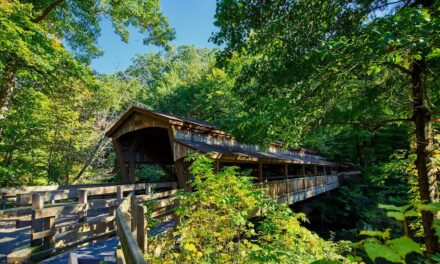Toms River, a riverside town situated in Ocean County, New Jersey, is a township with a rich historical legacy.
From its early indigenous roots to its modern suburban character, Toms River has undergone significant transformations that reflect broader regional and national developments.
Table of Contents
Early Beginnings
Lenape People
The area that is now Toms River was originally inhabited by the Lenape Native Americans.
The Lenape utilized the rich resources of the rivers, forests, and coastal areas for their sustenance. They practiced agriculture, hunting, and fishing, establishing a sustainable way of life that lasted for centuries.
European Settlement
Dutch and English Colonization
In the early 17th century, Dutch and later English settlers began to explore and establish themselves in the area.
These settlers were drawn by the fertile land and abundant natural resources. The first European settlers engaged in farming, timber, and fishing, laying the groundwork for future development.
The Revolutionary War
Strategic Importance
Toms River played a significant role during the American Revolutionary War due to its strategic location.
The village was a key site for salt production, essential for food preservation for the Continental Army. In 1782, a British attack led to the burning of Toms River, highlighting its importance in the conflict and the resilience of its inhabitants.
19th Century Development
Industrial Growth
Throughout the 19th century, Toms River saw significant industrial growth.
Due to the area’s abundant natural resources, the timber and shipbuilding industries flourished. The construction of railroads further spurred economic development by facilitating the transport of goods and people.
Township Incorporation
In 1892, Toms River was officially incorporated as a township, marking a new governance and infrastructure development era.
This period saw the establishment of essential public services, schools, and churches, fostering a sense of community and growth.
20th Century Transformation
Post-War Boom
The post-World War II era was a time of fast suburbanization for Toms River.
Veterans returning home sought suburban lifestyles, leading to a housing boom and the development of new residential neighborhoods. This growth necessitated the expansion of public services, schools, and commercial areas.
Cultural and Recreational Development
The mid to late 20th century also saw the development of cultural and recreational facilities in Toms River.
Parks, sports complexes, and community centers were established, enhancing the quality of life for residents and fostering a strong sense of community.
Modern Toms River: A Thriving Community
Economic Diversification
Today, Toms River boasts a diversified economy, with sectors such as healthcare, retail, and education playing significant roles.
The township has successfully transitioned from its industrial roots to a modern suburban community with a robust economic base. This diversification has ensured sustained growth and stability.
Cultural Diversity
Toms River is known for its cultural diversity, with various ethnic communities contributing to the rich cultural fabric of the township.
This diversity is celebrated through numerous festivals, culinary experiences, and community events, making Toms River a vibrant and inclusive place to live.
Fun Things to Do in Toms River
Cultural and Recreational Attractions
- Cattus Island County Park: A beautiful park offering hiking trails, nature walks, and a butterfly garden.
- Toms River Seaport Society and Maritime Museum: Explore the maritime history of Toms River through exhibits and artifacts.
- Insectropolis: A fun and educational insect museum, perfect for families and curious minds.
- Beaches and Boardwalks: The nearby beaches and boardwalks of the Jersey Shore offer sun, sand, and a variety of entertainment options.
Historical Sites
- The Old Town Hall: A historic building that serves as a museum and cultural center.
- Ocean County Historical Society: Offers exhibits and programs that delve into the area’s rich history.
Q&A: Understanding Toms River’s Legacy
Q: What role did Toms River play during the American Revolutionary War?
A: Toms River was a key site for salt production, essential for the Continental Army, and was attacked by the British in 1782.
Q: How did Toms River transition from an industrial to a suburban community?
A: The post-World War II era saw a housing boom, the development of residential neighborhoods, and the expansion of public services and commercial areas.
Q: What are some popular recreational activities in Toms River today?
A: Popular activities include visiting Cattus Island County Park, exploring the Toms River Seaport Society and Maritime Museum, and enjoying nearby beaches and boardwalks.
Q: How has Toms River’s economy diversified in recent years?
A: The economy now includes sectors such as healthcare, retail, and education, providing a robust economic base.
Q: What efforts have been made to preserve Toms River’s history?
A: Local organizations like the Ocean County Historical Society work to preserve the area’s history through museums, exhibits, and educational programs.
Q: How does Toms River celebrate its cultural diversity?
A: The township hosts numerous festivals, culinary events, and community programs that celebrate its diverse cultural heritage.
The Future of Toms River, New Jersey
As Toms River continues to evolve, it remains tied to preserving its history while embracing modern development.
The township’s focus on providing quality services, enhancing recreational facilities, and fostering a strong sense of community ensures a bright future for its residents.
Toms River stands as a testament to its people’s enduring spirit and adaptability, ready to face the challenges and opportunities of the future.





